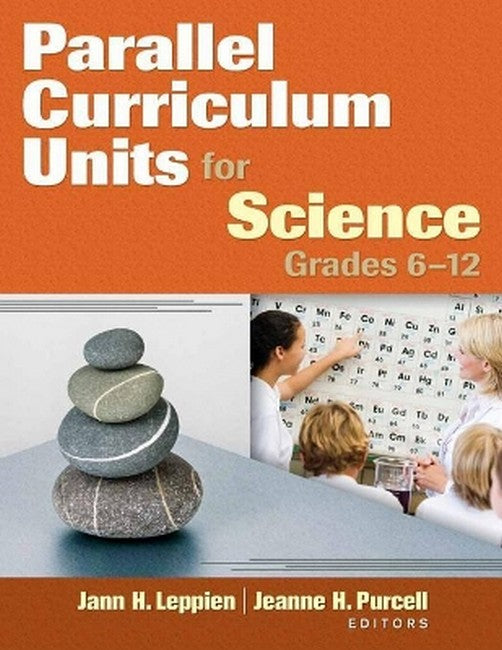Jann Leppien served as a gifted and talented coordinator in Montana prior to attending the University of Connecticut, where she earned her doctorate in gifted education and worked as a research assistant at the National Research Center for the Gifted and Talented. She has been a teacher for 24 years, spending 14 of those years working as a classroom teacher, enrichment specialist, and coordinator of the Schoolwide Enrichment Model in Montana. She is past president of the Montana Association for Gifted and Tal-ented Education. Currently, she is an associate professor in the School of Education at the University of Great Falls in Montana. Leppien teaches graduate and under-graduate courses in gifted education, educational research, curriculum and assess-ment, creativity, and methods courses in math, science, and social studies. Her research interests include teacher collaboration, curriculum design, underachievement, and planning instruction for advanced learners. Leppien works as a consultant to teachers in the field of gifted education and as a national trainer for the Talents Unlimited Program. She is coauthor of The Multiple Menu Model: A Par-allel Guide for Developing Differentiated Curriculum. She is active in the National Association for Gifted Children (NAGC), serving as a board member and newsletter editor of the Curriculum Division, and a board member of the Association for the Education of Gifted Underachieving Students. Jeanne H. Purcell is the consultant to the Connecticut State Depart-ment of Education for gifted and talented education. She is also director of UConn Mentor Connection, a nationally recognized summer mentorship program for talented teenagers that is part of the NEAG Center for Talent Development at the University of Con-necticut. Prior to her work at the State Department of Connecticut, she was an administrator for Rocky Hill Public Schools (CT); a pro-gram specialist with the National Research Center on the Gifted and Talented, where she worked collaboratively with other researchers on national issues related to high-achieving young people; an instructor of Teaching the Talented, a graduate-level program in gifted education; and a staff developer to school districts across the country and Canada. She has been an En-glish teacher, community service coordinator, and teacher of the gifted, K-12, for 18 years in Connecticut school districts and has published many articles that have appeared in Educational Leadership, Gifted Child Quarterly, Roeper Review, Educa-tional and Psychological Measurement, National Association of Secondary School Principals' Bulletin, Our Children: The National PTA Magazine, Parenting for High Potential, and Journal for the Education of the Gifted. She is active in the National Association for Gifted Children (NAGC) and serves on the Awards Committee and the Curriculum Committee of NAGC, for which she is the co-chair for the annual Curriculum Awards Competition.
Request Academic Copy
Please copy the ISBN for submitting review copy form
Description
About the Editors About the Contributors Introduction 1. Genetics: Our Past, Present, and Future: A Middle School Unit for Grades 6-8 - Lindsey Asbury Introduction to the Unit Background to the Unit Content Framework Unit Components and Rationale Unit Sequence, Description, and Teacher Reflection Lesson 1.1: Preassessment and Unit Introduction (Dominant and Recessive Genes) Lesson 1.2: Punnet Squares and Predicting Heredity Lesson 1.3: DNA Lesson 1.4: DNA Extraction Lab Lesson 1.5: DNA Fingerprinting and Crime Lab Investigation Lesson 1.6: Genetics and European History Lesson 1.7: Genetics in Practice Unit 1 Appendixes 2. The Exxon Valdez Oil Spill: What's at Stake? The Convergence of Science and Society, Grade 6 - Julie Martinek Introduction to the Unit Background to the Unit Content Framework Unit Assessments Unit Sequence, Description, and Teacher Reflection Lesson 2.1: Pretest: The Cause-and-Effect Relationship within a System Lesson 2.2: Introduction to the Exxon Valdez Problem Lesson 2.3: Setting Up the Stakeholders? Research Activities Lesson 2.4: Prioritizing the Sites and Constructing a Persuasive Argument/Essay Unit 2 Appendixes 3. Systems: An Integrated Approach to Science and English Instruction, Grades 9-10 - Kristina J. Doubet Introduction to the Unit Background to the Unit Content Framework Lesson/Unit Assessments Lesson Sequence and Teacher Reflection Lesson3.1: An Introduction to Systems Lesson 3.2 (English): The Pearl, Part 1 (Chapters 1-3) Lesson 3.3 (Science): Introducing Cell Structure Lesson 3.4 (English): The Pearl, Part 2 (Chapters 4-6) Lesson 3.5 (Science): Movement in Cells Unit 3 Appendixes 4. The Periodic Table: Getting to Know and Appreciate the Elements and Their Families, Grade 10 - Fie Budzinsky Background to the Unit Content Framework Overview of Key Lesson Ideas/Purposes Lesson 4.1: The Elements: Getting to Know You Lesson 4.2: The Elements: Up Close and Personal Lesson 4.3: We Are Family! Lesson 4.4: The Elements in Action Lesson 4.5: Breaking News Unit 4 Appendixes
"The parallel curriculum model provides a useful framework for creating lessons that are appropriate for all students. Applying it to science, the authors challenge students to think critically in all they do, synthesizing material within the STEM disciplines as well as reaching out to connect to the humanities. The teacher reflections offer relevant tips to maximize the effect of each aspect of the lesson. Most of all, the authors respect their students and their right to interact with challenging curriculum. I highly endorse these units for secondary students and am so excited with the challenge these units provide." -- Felicia A. Dixon, Professor Emerita of Psychology "Dr. Leppien and her colleagues provide a user-friendly approach to motivating young people through meaningful scientific investigations. I am pleased to incorporate this text into my graduate courses in gifted education." -- Thomas P. Hebert, Professor "Teachers at various stages of professional development in curriculum design will find these materials powerful examples that will guide their growth and development and sharpen their skills." -- Mary L. Slade, Professor "President Obama stated that 'Science is more essential for our prosperity, our security, our health, our environment, and our quality of life than it has ever been' (2009). This statement speaks to an urgent call for young people to acquire increased scientific knowledge. This book addresses that need by providing carefully designed, highly engaging, and intellectually stimulating lessons." -- Karen L. Westbert, Associate Professor

